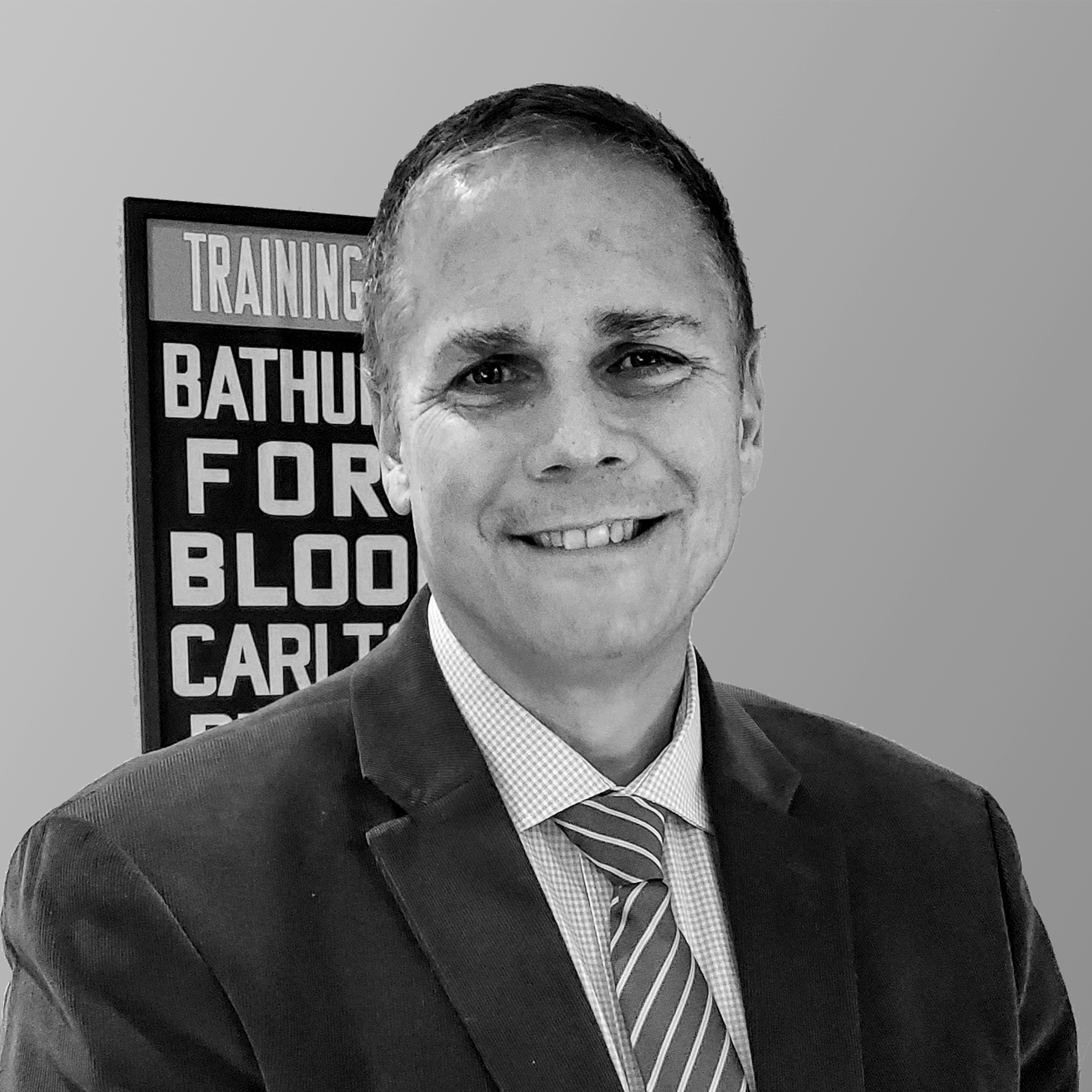Give meaning to the change
While the value of returning to in-person work may be clear to the senior team, it’s unlikely that everyone in the organization will find it apparent.In the absence of information, people tell themselves storiesIn the absence of information, people tell themselves stories – and those stories are rarely positive. Without a clear understanding of the benefit of returning to work, people are likely to tell themselves that it’s because they’re not trusted to do their job while working remotely. Or, that it’s because of their leaders’ own discomfort with remote work. To combat this, organizations need to be able to clearly articulate the value of why people are being asked to come back to the office, beyond “you get to keep your job.” People need to understand how it benefits the organization, how it benefits their team, and how it benefits them personally. A client I work with, League, provides a useful example of this in their communication to employees about their plans for a hybrid model. Their Chief People Officer, Kim Tabac, has promised their people to, “strike the balance between the ‘I’ and the ‘We’ by focusing on the intersection of the employees needs for meaningful work, and a continued focus on their mental health and wellness, with the company’s focus on high performance, innovation, and connection to our mission.” In addition to helping motivate people who would rather continue to work remotely, being clear about the value of working in-person can help to ease the pain of change for everyone in the organization. A few months into the pandemic, we asked leaders about their challenges in the remote work environment and almost one in five said their biggest obstacle was others not being open to change. By giving the change meaning, organizations can reduce this friction point and accelerate the pace at which the benefit of the change begins to outweigh the discomfort of the change itself.
Ditch broad-reaching incentive programs in favour of personalized motivation
Skilled workers are leaving their jobs in droves because they don’t want to go back to the way things were. But it would be wrong to assume that people are most motivated by having flexibility in where and how they work. There are many different things that motivate people at an individual level, as diverse as the team itself. Organizations can drive performance, reduce turnover, and facilitate organizational change by discovering each contributor’s top motivator and connecting it with their work. We recently ran a workshop with 220 leaders at a financial services company on the subject of how to hold more effective career conversations. When we asked the leaders what motivates them in their careers, there was no consensus. A top three did emerge (interesting work, money, and meaningful work, respectively), but none showed a clear majority and only 10% said they are motivated by all three. What this tells us is that a broad-reaching program for this group focused on interesting work, money, and meaningful work would only be a perfect fit for one in ten leaders. What’s more, a program focused on improving work fit to life would only capture the attention of a little over one in three. To effectively motivate individuals through the return to in-person work, and beyond, organizations need to shift to an personalized approach.Leverage people leaders to put plans into action
As the soccer coach John Herdman said, “People do things for people, not things.” For organizations to successfully communicate the value of returning to work and tap into what motivates individual contributors – and therefore retain skilled workers – people managers need to be at the centre of a culture shift that makes leadership their first job.People do things for people, not things.Too often, people leaders feel like managing their team is a “to do” along with the rest of their job. In fact, when we asked the same group of leaders what gets in their way of having career conversations with their people, 42% told us they don’t have the time. Organizations need to give leaders a clear expectation that helping their people grow and develop is their first job, rather than something to be fit in around other tasks. By investing in people and having these conversations, that’s how the work’s going to get done. It’s not the other way around. As the plan is set in motion, focus on three priorities to enable leaders through the transition to in-person work:
1. Encourage leaders to build relationships with their people
At the heart of all this is emotion. Whether someone would rather quit than come back to the office or whether they’re motivated in their job, all comes down to how they feel about the situation. In order to tap into the power within emotion, leaders need to build relationships with their people and earn permission to do so. And if they’re leading a team that’s distributed or working on a hybrid model, they need to pay close attention to their relationships with the people they don’t see in person on a daily basis.2. Give leaders the skills to coach their people
Telling leaders to find out what motivates their people is about as helpful as a basketball coach telling you to shoot a three pointer. Leaders need to understand their role as a coach; they need questioning and listening skills to open and carry out effective conversations; they need the ability to give their people clarity on what “good work” looks like; and they need to be skilled at giving recognition in ways that’s going to motivate their people.3. Make regular career conversations a formal part of performance management – and empower leaders to connect their people with what motivates them
With the relationships and skills in place, ask leaders to hold regular career conversations with their people. Make it every leader’s responsibility to understand what motivates each individual on their team and support them in using that information to create connection points between the work and what motivates them.Avoid the “brain drain”
Enough companies have already learned their lesson the hard way – requiring an entire workforce to undergo a significant and rapid change can lead to a drop in engagement and a rapid “brain drain” if not handled carefully. To ease the transition and retain skilled workers, engage your leaders in a culture shift that puts leadership first, gives leaders the skills they need to motivate their people, and encourages them not just to have career conversations, but to create meaningful connections between what their team does and what motivates them. At Third Factor we work across many different disciplines, not the least of which is elite sport. Working with Olympic and Paralympic athletes and coaches, and bringing their best practices for coaching, resilience and collaboration to business, is what got us started some 30 years ago. And it’s what’s led to our flagship leadership development programs like Building Resilience and 3×4 Coaching. With the Tokyo Games officially underway, we’re cheering on a number of the Canadians who we’ve had the pleasure of working with. Here’s who we’ll be watching:The Canadian Women’s Soccer Team
The Women’s soccer tournament is already underway in Tokyo. We’ll be cheering for the entire team, and cheering just a little harder for captain Christine Sinclair who appears by video in some of our programs with helpful advice on using negative emotion as fuel for performance.Rosie MacLennan, Trampoline Gymnastics
In Dane Jensen’s new book, The Power Of Pressure: Why Pressure Isn’t The Problem, It’s The Solution, Rosie shares how making connections with others helped her recover from an injury and regain confidence in her sport. We’ll be watching her attempt for a third Gold Medal at her fifth Games when she competes on Friday, July 30th. Rosie MacLennan recovers from injury / Source: Instagram
Rosie MacLennan recovers from injury / Source: Instagram
The Canadian Women’s Basketball Team
Basketball has become hugely popular in Canada, and we’ve been proud to work with Canada Basketball and the Canadian Men’s National Team in recent years. While the men just missed out on being one of only 12 teams to qualify for Tokyo, we’ll be cheering just as hard for the women, who start their tournament on Monday, July 26th against Serbia.Erica Wiebe, Wrestling
We’ll be taking a break from cheering for Erica in the Executive MBA Americas program, a partnership of Queen’s and Cornell Universities to which we contribute, to cheer her on in the women’s 75kg event.A few others
Martha McCabe, who retired after her third Olympic appearance at the Rio Games and runs Olympian-led mentorship program Head To Head, which we proudly support, is running the ‘Athlete Concierge’ in Tokyo. Follow her journey on Twitter at @MarthMcC. We’ve worked with managers within the Canadian Olympic Committee to develop coaching skills, including the head of the Athlete Mentorship Program, Anh Nguyen, and athlete mentor Lizanne Murphy. This article in the Toronto Star has some great details about the mission of athlete mentorship in Canada. As we anxiously await the launch of Dane Jensen’s new book, The Power of Pressure, the Summer Reading List has arrived just in time to give us the distraction we need. This is our favourite summer tradition, in which members of the Third Factor team offer their best picks for your summer. Diverse as always, this list includes novels, nonfiction, a collection of short stories, and even an audiobook about dragons. Whether you want something lighthearted or something to chew on, your next favourite book is in this list. Here are this year’s picks. One book I am eager to dive into this summer is Adam Grant’s Think Again. For me, learning to stay curious longer and being less certain that I already have the answers will allow me to approach whatever the post-Covid world throws my way. Grant is an amazing storyteller with a great analytical mind so I am sure it will be an amazing read. A bit of a departure from my previous picks, The Vanquished is a thoroughly researched, thought-provoking, and highly readable look at the period of upheaval, bloodshed, and social re-ordering that followed WWI in the defeated countries. It upended my understanding of the inter-war period and, as one reviewer put it, “makes it easier to understand why order came to be a supremely desirable objective in 1930s Europe, trumping freedom.” If you’re a history buff, this is a book that will give you a ton of new insight without putting you to sleep. I purchased the audiobook for longer car rides as a way to entertain my kids that did not involve staring into a screen, and I ended up getting drawn into the story along with them. As a parent, I loved the imaginative storytelling and positive messages. As a person, I was thoroughly entertained. An unexpected bonus: the audiobook is brilliantly narrated by Scottish actor David Tennant, who seamlessly switches between over a dozen distinct characters. Just a heads up – this is a 4 volume series but it flies by. We are (sadly) on the fourth and final volume. This is a great opportunity to rethink a lot of what we think we know about our health. Sinclair really challenges many of the traditional notions about health and backs it all with stellar evidence. This is a great summer read – if you don’t mind digging into the science of things! Incredible insights, research simplified, great stories and some very practical advice. I particularly enjoyed the Longevity Now chapter. All told, I’ve made a few key changes since reading this book that has put a bounce back in my step, has me sleeping better, and more energized for the coming pivot back to whatever our new normal is. In this book, the economists Milton and Rose Friedmen promote (very eloquently) the idea of free market economy, originally introduced more than 200 years ago by Adam Smith. They discuss how the idea of a free market economy clearly manifested itself in a rapid and unprecedented development of countries like Great Britain and the United States in the 19th century – and how later, unwise interference of government bodies into the process caused more damage than help. Over the past few years, most of my reading time has been spent sharing children’s books with my two young boys. As they’re starting to get to an age where they’re interested in novels, Roald Dahl’s The Witches has been a standout favourite. The story follows a young boy who falls victim to real witches – and exacts his revenge. The story is brilliant, the imagery fantastic, and the characters voices make it extra fun to read aloud. Bonus points for the many adaptations including the movies and graphic novel the kids will read to themselves. From the first page, the imagery, so eloquently described, becomes reality to my senses. I see, feel and smell the sweetgrass. The meaning and symbolism shared are the first of many lessons in life that grace the pages that follow. As I continue to read the stories, I accept Kimmerer’s invitation to understand the world from a different perspective. Not a new one. An old one, ancient in fact, almost erased. The remarkable transfer of knowledge on botony, language, culture and history flows easily and beautifully. Part wonderment, part awe become woven into painful reality as I try to comprehend the injustices on our Indigenous peoples. This book is a gift to the soul and a tender reflection on what needs to be understood by all who share this earth. As we come out of the pandemic and look to restore the lives we love I clutch my heart and hope that our future is informed by the hope of braiding sweetgrass. Eight people. A failed robbery. An open house. Anxious People centres on how a shared event can change the course of many lives. I found this novel a bland read for the first 95 pages as the writing did little to draw out the characters. But the story gains momentum as the captives’ lives and their relationships with the outside world and one another blend together. Backman’s philosophical insights and humour make the book worth a summer read. This is a fantastic read if you’ve ever wanted practical strategies to help you manage stress and perform at your best (and, really, who hasn’t?!). In Heart Breath Mind, Dr. Lagos clearly explains her practical, 10-week breathing training protocol, which is based on the science behind heart rate variability (HRV). Your heart muscle is in a constant, two-way conversation with your brain and body via the vagus nerve. This book helps you learn to take better control of that conversation in stressful moments. I am 7 weeks into the 10-week training protocol, and I can feel the physical, mental, and emotional impact that resonant frequency breathing can have when practiced consistently over time. You may not give your breathing a second thought in everyday life, but this book shows you that it can be a powerful tool for better performance, stress management, and increased mental clarity! This book offers great insight into the history of American music between 1950 and 1970. It’s about ingenuity, hard work and perseverance. Learn about the rivalry between polar opposites, Leo Fender and Les Paul, while enjoying the joy ride of rock music. Lots of great stories about the humble origins of the tools that allowed rockers & blues players to get loud. We know the music – here is how it got there. This author is a great writer, researcher and story teller. The Book of Longings is a historical novel taking place in the first century during Jesus’ time. To read a book about this time period, that involves Jesus but is not about him, was really interesting. The protagonist is a bright, inspiring woman engaged in a bold struggle to realize her own potential in a time and culture where she has no power. Her life in intertwined with Jesus life in a completely unexpected way. Jesus is portrayed here from a very humanistic perspective rather than a spiritual one. Reading about their parallel journeys was fascinating. I thoroughly enjoyed this book. It was definitely a page turner. My pick for the summer reading list follows the lives of three people, all on very different p aths but still intertwined. One becomes a con artist, so you know it’s good! I’ve enjoyed Linwood Barclay’s novels for a number of years, and his latest is no exception. He weaves great character development (including a ripped from the headlines rather despicable villain) with interesting plot twists and lots of action. As with most of his novels, this is a great blend of mystery and thriller. I really wanted to recommend Transcend, which is a revisitation of Abraham Maslow and his hierarchy of needs but that might be a bit heavy for summer reading! Not that Adam‘s book is light, but rather it’s a wonderfully easy read given his style and sense of humor. It’s basically encouraging us to keep an open mind and that if we have some humility and curiosity and reconsider our beliefs we can always reinvent ourselves. He’s a wonderful storyteller which makes for a great summer read. He and Brené Brown have a wonderful podcast that covers off some of the content as well. Many websites use affiliate links to make money when you buy something from Amazon – we don’t. Feel free to follow the links provided or pick up the book you want from your favourite local bookseller. What happens to people who get really good at time management? They get more work! In his latest piece for Harvard Business Review, Third Factor CEO, Dane Jensen, explores why time management is a trap – and what you can do instead to be more efficient without becoming overwhelmed. Read the article at HBR.org. Over the past year I have worked with hundreds of leaders across a range of industries. And the most common question they have asked is “How do I sustain the energy levels of my people?”. This year, more than any other in recent memory, has taxed the energy reserves of even the most resilient teams. Hugely disruptive changes, prolonged periods of uncertainty and the blurring of work and home have drained people’s batteries and made it difficult to recharge. When leaders try to step in and fill the energy gap, it’s not long before they find themselves starting to run out of gas. The key is to take on the challenge, without trying to do it all on your own.A team’s energy comes from within
A while back I was leading a Self-Aware Team program for the coaches and support staff of a team that was preparing to represent Canada at the Winter Games in Beijing. An important part the program is an exercise in which team members create “player cards” containing key insights they’ve learned about themselves through the program. The group then comes together in a Zoom call to share those insights and give and get feedback. Like so many others, this group had been through an incredibly taxing year. Because of the pandemic, the team had to expend significantly more energy than it ordinarily would to create effective training opportunities for the athletes. Quarantines and “bubbling” rules had forced individuals to spend months at a time on the road, adapting to new routines and away from their families. And uncertainty over everything from health and testing to the potential fate of the games loomed over it all.“The ways they brought energy were as diverse as the people themselves.”As the group shared their player cards, it quickly came to light that a number of different members of this team had been significant “energy givers” through this difficult time. And the ways they brought energy were as diverse as the people themselves.
- One senior leader on the team created energy in the more traditional way that many leaders do: by envisioning a compelling opportunity, mapping out a plan to get there and leading the charge towards it.
- Another team member helped bring lightness to the daily grind by noticing and pointing out funny moments, breathtaking views, or interesting aspects of their surroundings. These moments created mini-breaks that relieved tension and reminded the team of the unique and special journey they were on together.
- Another contributor was celebrated for their “can-do attitude.” This individual had a “big personality” with a healthy dose of confidence who led by example and encouragement. Their jokes, positive energy and infectious smile helped the team forge ahead with a belief that they could prevail when they were hit with a setback or success seemed a long way off.
- Yet another had taken on the role of a confidante and created a safe, non-judgmental space for people to bounce ideas, vent frustrations and seek advice when they needed to gain perspective on a situation (or person) that was creating challenges.
Three energizing principles
In listening to the group share their feedback, I was struck by three things: Energy is found in diversity. During the discussion I heard multiple different ways that multiple different people infused the group with energy. Some provided big boosts, other provided steady nudges. Some energized all team members. Others were more critical in sustaining a handful of specific individuals. Some were helpful at the start to get the flywheel moving forward. Others stepped in during negative moments to break tension and redirect focus when forward movement was stalled. Each team member’s contribution could stand on its own, but put together they added up to more than the sum of their parts. Energizing the team is everyone’s responsibility. No single contributor can create enough energy on their own to sustain a team; the demands are simply too vast. Everyone on the team shares some responsibility for energizing their teammates. The team leader’s job is to create the conditions that allow it to happen. Feedback is of key importance. In many cases, the “energy givers” were surprised to learn the value of what they provided. In fact, some had mistakenly believed that the very behaviors that others found energizing were irrelevant or a distraction. If not for the reinforcement they received during the session, many had been planning to curtail some of those behaviors moving forward. And, if that had taken place, then valuable sources of positive energy would have simply faded away because people were unaware.Energize your team
Every leader needs to create an environment that enables their people to perform. And energy is a critical part of that environment. But it’s not the leader’s role to provide that energy all on their own. Instead, the best leaders create the conditions for “energy givers” to thrive.“Create a clear image of what it looks like to be an energy giver.”Start by setting the expectation that energy is a team responsibility. Work with your people to create a clear image of what it looks like to be an “energy giver” and what behaviors will move the team’s energy level in a positive direction. Help your team surface the different ways “energy givers” sustain the team in tough moments. Make it a part of your regular check-ins to ask people what’s contributed to their energy over the past week and encourage open discussion when appropriate. Finally, provide opportunities for regular feedback and recognition so that each “energy giver” knows what to keep doing. This feedback can come from you as a leader, but people should also hear from their peers. Effective feedback recognizes the behavior, communicates its impact, and encourages the person to continue. With this approach, a leader can create more energy on their team than they could ever hope to do alone, while at the same time helping their people to stay engaged and motivated through whatever may come.
Bring the Summer Learning Series to your team • Request a call • Send this page to your manager or HR team
Energize your team as we move out of the pandemic with a series of three, one-hour virtual learning events. The months ahead will present new challenges as business needs change, blended working environments begin to take shape, and leaders are once again forced to adjust to rapid change and uncertainty. Help ready your people to lead and perform through the next phase with a series of virtual learning events.
TWO TRACKS TO CHOOSE FROM
Develop your people in the areas that will benefit them most. Choose our leadership track to build your team’s coaching and collaboration capabilities, or choose our resilience track to build your team’s ability to perform under pressure.LEADERSHIP TRACK Develop high performing leaders.
3×4 Coaching
Drawing on a wealth of experience from our 30+ years of working with the world’s top coaches, 3×4 Coaching introduces the 3 Plays and 4 Skills great coaches use to build commitment and get results.Building High-Performing Teams
Basketball coach Roy Rana has built high performing teams at every level from high school to the NBA. Drawing on years of experience, he will share what he has learned about how to create an environment in which a team is more than the sum of its parts.Working With People You Don’t Understand
Introduce participants to the relationship between their mindsets, behaviours and results, and take them on an interactive tour of how adopting new mindsets of curiosity and generosity can make those behaviours automatic.
RESILIENCE TRACK Enhance performance under pressure.
Building Resilience
High performance is not possible without pressure. The Building Resilience keynote introduces a personal resilience toolkit used by elite athletes to develop a relationship with stress and pressure that puts them in the driver’s seat.Maintaining Team Motivation Through the Troughs
When teams face challenging times, leaders have four allies to preserve motivation and fight the tide of disillusionment. This session brings these allies to life with stories from people who have used them under incredible pressure.The Power of Pressure
Drawing insights from his book, The Power of Pressure: Why Pressure isn’t the Problem, it’s the Solution, Dane Jensen’s new keynote address introduces three powerful strategies for using pressure as an advantage.
DELIVERED BY A WORLD-CLASS FACULTY
Our speakers teach at top business schools, have coached Olympic and professional athletes, been Olympic athletes, consulted at the highest level of business, and practiced law. Their strong personalities and unique personal experience draw audiences in and keep learners engaged.LEARN MORE
Want to learn more about bringing our Summer Learning Series to your organization? Leave your contact information below and we’ll get in touch.The relationship is the engine; emotion is the fuel
Every engine needs fuel, and in the coaching relationship there is no stronger fuel than emotion. Much of the time in business we’re taught to keep emotions in check – especially negative emotions like anger, frustration and disappointment. Since it’s rare to see these kinds of emotions expressed, it can be triggering when our people show their dissatisfaction. It can feel like an attack, and the default response can be to mirror the emotion – meet anger with anger – or become defensive.Every engine needs fuel, and in the coaching relationship there is no stronger fuel than emotion.Falling into this trap, however, robs you of the opportunity to direct the energy in that emotion in a productive direction. When a team member expresses negative emotion, it means they care. When leaders make an effort to notice and acknowledge the emotion, they can deepen the relationship and build trust. And by exploring the emotion, they can help their people see what’s possible and use their feelings as motivation to take a step in the right direction. In these situations, the relationship is what allows the coach to lean into the emotion and explore it. In our 3×4 Coaching program, we give participants challenges to apply key learnings back on the job. In one of these challenges, a participant committed to asking their people simple questions like, “What’s new from the weekend?” much more frequently than they had before. Asking more, personal questions helped this leader build rapport with their people. And it provided the leader with new insight into their people’s emotions. In the course of these conversations, this leader noticed that the emotion in the person’s response provided a deeper view to valuable information. By leaning into those emotions and exploring them further, the leader was able to learn more about how they were interpreting their experiences. Noticing what made them frustrated, anxious, fearful, or even happy and excited, improved the leader’s ability to identify and address their team’s issues and challenges. With stronger relationships in place, and positive results beginning to emerge, it wasn’t long before the leader began asking more direct questions to gain a deeper understanding of their people’s feelings. Equipped with better information, the leader was able to give more and more targeted support and feedback to enable their team’s success. As a leader and a coach, the relationship you have with your people is what allows you to help them be at their best. When leaders give their relationships the care they need and lean into emotions, they can drive higher levels of performance, and ultimately results.
Make the most of your investment
Investing time in building relationships pays dividends. And yet, all the other pressures don’t go away just because you’ve decided to put your time into this endeavour. To optimize the benefits of relationship building given the reality of time constraints, smart coaches create a strategy for how they’re going to build and maintain their relationships every day. What this comes down to is showing people that you care. That means making time for them, offering them support when they’re struggling, and doing both with unwavering consistency. But every person is different, and what works for one person might not work for another. When you’re working to build relationships with the people you lead, make a point of understanding:- What are their strengths?
- What motivates them, specifically?
- What is the best way to communicate with them?




















